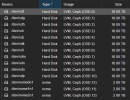I will preface this by saying I am a total ProxMox/CEHP noob... I am good with Linux and I have been a VMware Admin/Engineer for the better part of 2 decades...
I have looked through dozens of walk-thoughts and videos but I am still struggling with CEPH and I need some help.
Goal:
HA VM/Storage Cluster with Tiered Storage Capability
NVME
SSD
Spinner
Current Environment:
4x Compute Nodes Dell PowerEdge R650 w/
1TB RAM
2x 64GB Sata-Dom ProxMox OS
3x 2TB SSD RAIDz ZFS Local Storage
3x SuperMicro Mass storage servers w/
512GB RAM
2x 64GB Sata-Dom ProxMox OS
4x 2TB NVME
12x 2TB SSD
14x 16TB HDD Spinner Drives
40Gbps interface dedicated CEPH/Cluster Network
4x10Gbps Bonded Client Network
Any help or advice would be greatly appreciated!
I have looked through dozens of walk-thoughts and videos but I am still struggling with CEPH and I need some help.
Goal:
HA VM/Storage Cluster with Tiered Storage Capability
NVME
SSD
Spinner
Current Environment:
4x Compute Nodes Dell PowerEdge R650 w/
1TB RAM
2x 64GB Sata-Dom ProxMox OS
3x 2TB SSD RAIDz ZFS Local Storage
3x SuperMicro Mass storage servers w/
512GB RAM
2x 64GB Sata-Dom ProxMox OS
4x 2TB NVME
12x 2TB SSD
14x 16TB HDD Spinner Drives
40Gbps interface dedicated CEPH/Cluster Network
4x10Gbps Bonded Client Network
Any help or advice would be greatly appreciated!


